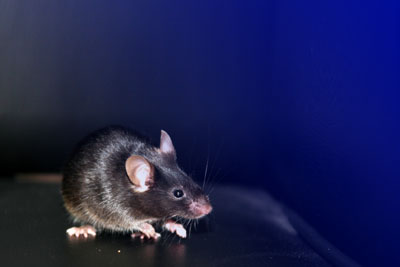Our scientists have cultivated healthy mice with iPS cells for the first time in the world.
On July 23rd, Nature published online the research results jointly completed by the research team led by researcher Zhou Qi from Institute of Zoology, Chinese Academy of Sciences and the research team led by Professor Ceng Fanyi from School of Medicine, Shanghai Jiaotong University. For the first time, they used iPS cells to obtain mice with survival and reproductive ability by injecting tetraploid blastocysts, thus proving the totipotency of iPS cells for the first time in the world.

Using iPS cells to inject tetraploid blastocysts, mice with survival and reproductive ability were obtained.
IPS cells are called induced pluripotent stem cells, which are stem cells induced from somatic cells and have developmental pluripotency similar to embryonic stem cells. In July, 2006, Japanese scientists announced for the first time that they had discovered the method of transforming mouse skin cells into pluripotent stem cells. In November, 2007, American and Japanese scientists induced human cells into iPS cells, which was rated as the top ten scientific and technological progress in the world by Science magazine in 2008. IPS cells have broad application prospects in the fields of biology and medicine, and are expected to become an important cell source for regenerative medicine and cell therapy.
The research of iPS has advanced by leaps and bounds, but do iPS cells really have the same totipotency as embryonic stem cells? Is it really comparable to embryonic stem cells? Embryonic stem cells can develop into normal mice when they are injected into the early embryos of tetraploid mice (embryos that have no further development ability and only provide nutritional environment) and then transplanted into surrogate mothers. Tetraploid blastocyst injection method is the "gold standard" to verify whether cells are totipotent. However, previous studies have found that iPS cells can not develop into living mice through tetraploid blastocyst injection like embryonic stem cells, and all the mouse fetuses formed after iPS cell injection die from early to late pregnancy. These results show that iPS cells are not totipotent yet.
Zhou Qi et al. prepared 37 iPS cells, injected more than 1,500 tetraploid embryos with 6 iPS cell lines, and finally obtained 27 live mice with 3 iPS cell lines. After identification by various molecular biology techniques, it was confirmed that the mice really developed from iPS cells, and some mice have now matured and propagated their offspring. This is the first time in the world to obtain live mice completely prepared from iPS cells, which strongly proves that iPS cells are truly totipotent. This work provides a technical platform for further research on the application of iPS technology in the fields of stem cells, developmental biology and regenerative medicine, pushes the research of iPS cells to a new height, and also makes an important contribution to China in this international hot research field.